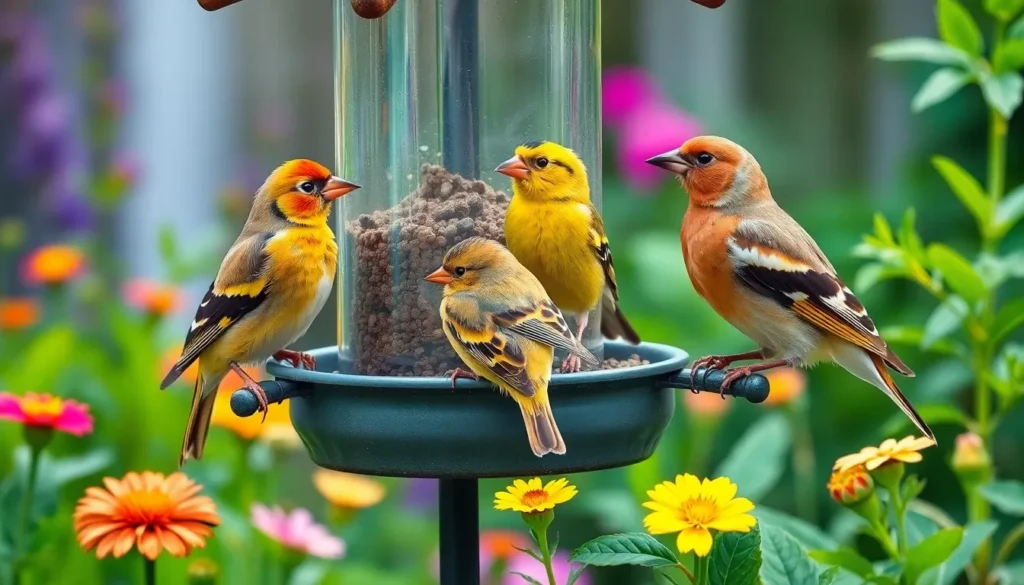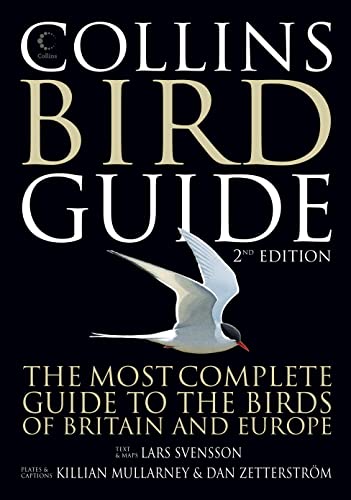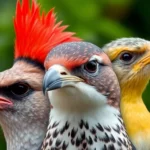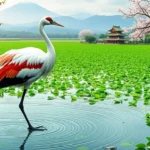We’ve all spotted those vibrant little songbirds darting through our gardens and parks but many of us don’t realize we’re witnessing some of nature’s most fascinating creatures. Finches represent one of the most diverse and adaptable bird families on Earth with over 230 species spread across every continent except Antarctica and Australia.
These remarkable birds have captured our attention for centuries with their brilliant colors melodic songs and incredible evolutionary story. From the iconic Goldfinch with its striking yellow plumage to Darwin’s famous Galápagos finches that helped shape our understanding of evolution these small songbirds pack tremendous scientific and aesthetic value into their compact frames.
Whether you’re a seasoned birdwatcher or simply curious about the cheerful visitors to your backyard feeder understanding finches opens up a industry of discovery. We’ll explore their unique characteristics diverse species and the surprising ways these small birds have influenced both science and culture throughout human history.
What Are Finches Birds
Finches represent a diverse family of small passerine songbirds classified within the Fringillidae family. These remarkable birds cover over 230 species distributed across three subfamilies: Fringillinae (true finches), Carduelinae (canaries and goldfinches), and Estrildinae (estrildid finches). Most finches measure between 3 to 10 inches in length and weigh approximately 0.3 to 1.4 ounces.
Seed eating forms the primary dietary foundation for finches, with their specialized cone-shaped beaks perfectly adapted for cracking open various seed types. Different finch species exhibit distinct beak sizes and shapes, ranging from the thick, powerful bills of hawfinches that crush cherry pits to the delicate, pointed beaks of siskins designed for extracting seeds from small cones. Their feeding preferences include sunflower seeds, thistle seeds, millet, and nyjer.
Social behavior defines finch characteristics, as they typically gather in flocks during non-breeding seasons. Breeding pairs establish territories during spring months, constructing cup-shaped nests using twigs, grass, and soft materials like moss or feathers. Female finches lay 2 to 6 eggs per clutch, incubating them for 12 to 14 days.
Geographic distribution spans every continent except Antarctica and Australia, though introduced populations exist in Australia and New Zealand. North American finches include American Goldfinches, House Finches, and Purple Finches, while European species feature European Goldfinches, Greenfinches, and Canaries. African finches cover many colorful species like Gouldian Finches and Weaverbirds.
Vocal abilities distinguish finches through their complex songs and calls used for communication, territory defense, and mate attraction. Male finches typically produce more elaborate songs than females, particularly during breeding season. These vocalizations consist of chirps, trills, and warbles that vary significantly between species and geographic regions.
Human interaction with finches dates back centuries, establishing them as popular cage birds and backyard visitors. Pet finches require specialized care including appropriate housing, balanced nutrition, and social companionship. Wild finches benefit garden ecosystems by controlling insect populations and dispersing seeds across landscapes.
Popular Finch Species

Several finch species have captured the hearts of birdwatchers and nature enthusiasts worldwide. These beloved birds showcase the remarkable diversity within the finch family through their unique characteristics and behaviors.
American Goldfinch
American Goldfinches display striking seasonal color changes that make them instantly recognizable. Males transform from olive-brown winter plumage to brilliant yellow breeding colors with contrasting black wings and cap during spring months. These birds measure 4.3 to 5.1 inches in length and weigh between 0.39 to 0.71 ounces.
Their diet consists primarily of nyjer seeds, sunflower seeds, and thistle seeds, which they extract using their specialized conical beaks. Flight patterns follow a distinctive undulating motion accompanied by cheerful “per-chick-o-ree” calls. Breeding occurs later than most songbirds, typically from June through September, allowing them to time reproduction with peak seed availability.
House Finch
House Finches originally inhabited western North America but expanded their range dramatically after introduction to the eastern United States in the 1940s. Males feature rosy red coloring on their head, breast, and rump, while females display streaky brown plumage with subtle patterns.
These adaptable birds measure 5 to 6 inches in length and thrive in both urban and suburban environments. Diet preferences include seeds from dandelions, mustard plants, and knotweed, supplemented by buds and fruits during certain seasons. Social behavior involves forming large flocks outside breeding season, often gathering at feeders with mixed seed offerings.
Purple Finch
Purple Finches inhabit coniferous and mixed forests across northern regions of North America. Males exhibit raspberry-red coloring that covers their entire head and breast, earning them comparison to being “dipped in raspberry juice.” Females feature heavily streaked brown plumage with distinctive white eyebrow stripes.
These finches measure 4.7 to 6.3 inches in length and prefer seeds from conifers, maples, and elms. Breeding territories cover mature forest areas where they construct cup-shaped nests in evergreen trees. Migration patterns bring them to lower elevations and more southern latitudes during winter months.
Zebra Finch
Zebra Finches originate from Australia and have become popular cage birds worldwide due to their hardy nature and social behavior. Males display distinctive black and white striped throat patterns resembling zebra markings, along with orange cheek patches and chestnut flanks. Females present more subdued gray and white coloring without the ornate male markings.
These small finches measure 3.9 to 4.3 inches in length and weigh approximately 0.42 to 0.49 ounces. Wild populations consume grass seeds and occasionally insects, while captive birds thrive on commercial finch seed mixtures. Breeding capacity remains active year-round in suitable conditions, with pairs producing multiple clutches containing 4 to 6 eggs each.
Physical Characteristics of Finches
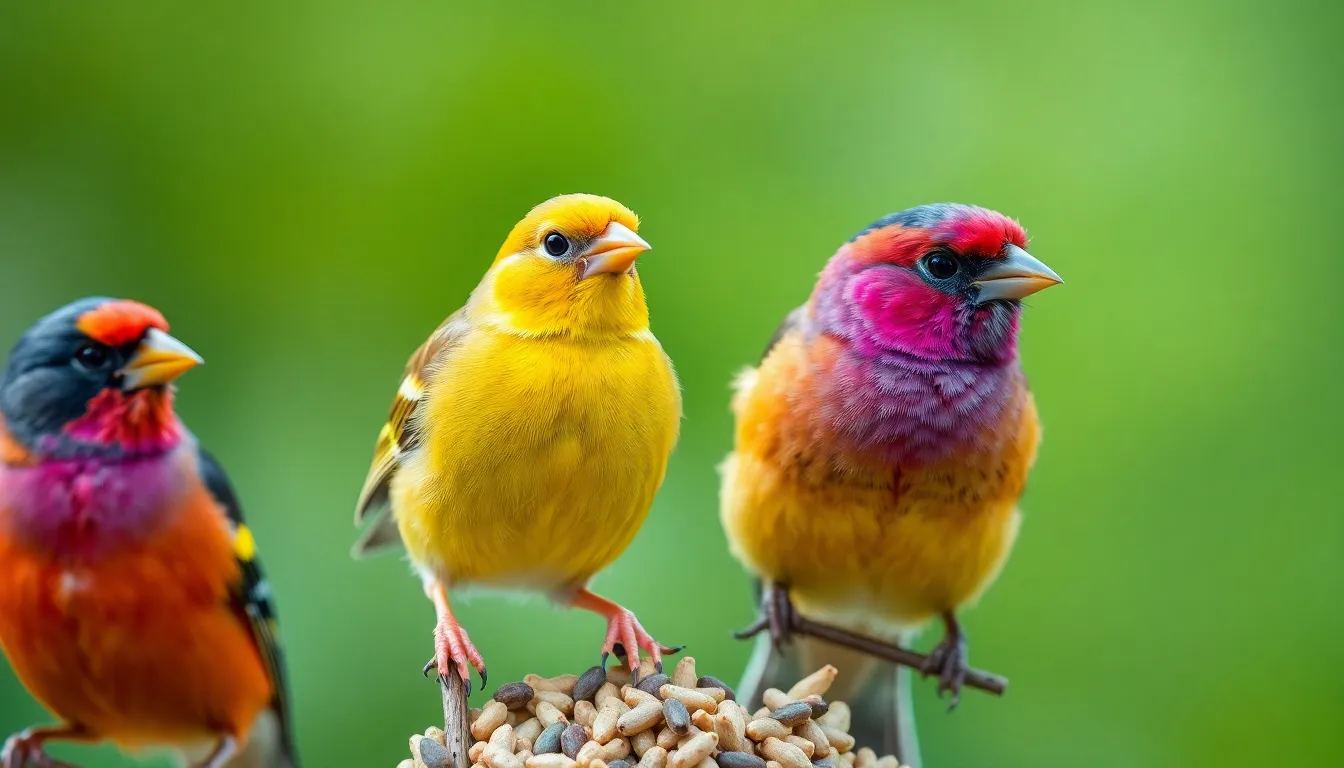
Finches display remarkable physical diversity across their 230+ species, with distinctive features that reflect their specialized lifestyles and habitats. These compact songbirds share common structural elements while showcasing unique adaptations that make each species identifiable to birdwatchers and researchers.
Size and Build
Most finches maintain a compact body structure that ranges from 3 to 10 inches in total length. Weight varies significantly across species, with smaller varieties like Goldfinches weighing approximately 0.3 ounces while larger species such as Evening Grosbeaks reach up to 1.4 ounces.
Finches possess proportionally large heads relative to their body size, housing their powerful jaw muscles. Their wings appear rounded and relatively short, designed for quick bursts of flight rather than long-distance soaring. Legs and feet show sturdy construction with sharp claws that grip branches and seed heads effectively during feeding.
Body proportions remain consistent across species, with most finches displaying a length to wingspan ratio of approximately 1:1.5. Tail length typically measures between 40-60% of total body length, providing essential balance during perching and maneuvering through dense vegetation.
Coloration and Markings
Male finches exhibit more vibrant coloration than females, particularly during breeding seasons when hormonal changes intensify their plumage. American Goldfinches transform from olive-brown winter coats to brilliant yellow summer plumage, while Purple Finches display deep raspberry-red coloring across their heads and breasts.
Seasonal color variations occur in many species, with molting cycles producing dramatic transformations. House Finches show consistent brown and red patterns year-round, though breeding males develop more intense red hues on their heads, chests, and rumps.
Wing markings create distinctive identification patterns across species. Goldfinches display bold black and white wing bars, while Siskins show subtle yellow striping along their flight feathers. Many species feature contrasting colors between their primary and secondary feathers, creating flash patterns during flight.
Juvenile finches typically display muted versions of adult female coloration until their first molt. Young birds often show streaked or spotted breast patterns that fade as they mature, with full adult coloration developing between 6-12 months of age.
Beak Structure
Finch beaks demonstrate specialized cone shapes perfectly adapted for seed cracking and processing. The upper and lower mandibles form sharp points that can penetrate tough seed hulls, while internal ridges help position seeds for optimal cracking leverage.
Beak size correlates directly with primary food sources across different species. Large-beaked finches like Evening Grosbeaks can crack maple seeds and cherry pits, while smaller-beaked species such as Goldfinches specialize in thistle and nyjer seeds.
Muscle attachment points around the skull provide exceptional bite force relative to body size. These powerful jaw muscles generate pressures exceeding 50 pounds per square inch in larger species, enabling access to previously unopened food sources.
Cross-species variations in beak curvature reflect feeding specializations. Straight, pointed beaks work efficiently on small seeds, while slightly curved beaks help extract seeds from deep flower heads and cones. Some species display subtle hooks at beak tips for handling sticky or irregularly shaped food items.
Finch Behavior and Habitat

Finches demonstrate remarkable adaptability across diverse ecosystems while maintaining consistent behavioral patterns that define their species success. Understanding their habitat preferences and social dynamics reveals how these birds thrive in both natural and human-modified environments.
Natural Habitat Requirements
Forest edges provide optimal conditions for most finch species, offering both shelter and abundant food sources. Open woodlands, grasslands, and scrublands support large finch populations by providing the seed-bearing plants these birds depend upon. Urban parks and suburban gardens have become increasingly important habitats as finches adapt to human-modified landscapes.
Elevation preferences vary significantly among species, with some finches thriving at sea level while others inhabit mountainous regions up to 14,000 feet. Temperature tolerance ranges from Arctic conditions for species like the Common Redpoll to tropical climates supporting Gouldian Finches. Water accessibility remains crucial, though many species obtain moisture from their seed-based diet and require drinking water only during dry periods.
| Habitat Type | Preferred Species | Elevation Range | Climate Preference |
|---|---|---|---|
| Forest Edges | Purple Finch, Pine Siskin | 0-8,000 feet | Temperate |
| Grasslands | American Goldfinch, Lesser Goldfinch | 0-6,000 feet | Semi-arid to humid |
| Urban Areas | House Finch, European Goldfinch | 0-5,000 feet | Variable |
| Mountain Regions | Rosy-faced Lovebird, Gray-crowned Rosy Finch | 5,000-14,000 feet | Alpine |
Feeding Habits
Seed consumption dominates finch diets, with different species specializing in particular seed types and sizes. Nyjer seeds attract American Goldfinches and Pine Siskins, while sunflower seeds provide nutrition for House Finches and Purple Finches. Seasonal dietary shifts occur as finches incorporate insects, berries, and tree buds into their meals during breeding seasons and migration periods.
Foraging techniques vary between ground feeding and aerial seed extraction from plants. Ground foragers like Dark-eyed Juncos search through leaf litter and fallen seeds, while acrobatic feeders such as American Goldfinches hang upside down on seed heads. Caching behavior appears in several species, with Pine Siskins storing seeds in bark crevices for later consumption.
Daily feeding patterns show peak activity during early morning and late afternoon hours when temperatures moderate and predator activity decreases. Flock feeding provides safety advantages, with sentinel birds alerting others to approaching threats while maintaining access to productive feeding sites.
Social Behavior
Flocking patterns change dramatically between breeding and non-breeding seasons, with solitary territorial pairs giving way to large mixed-species feeding groups. Winter flocks containing 50-200 individuals commonly form around reliable food sources like bird feeders and seed-rich fields. Communication within flocks relies on contact calls that maintain group cohesion during flight and feeding activities.
Breeding territories span 0.5 to 2 acres depending on food availability and population density. Males establish territories through song displays and aggressive posturing toward competing males. Pair bonding involves courtship feeding, synchronized flight patterns, and duet singing between mates.
Hierarchical structures within flocks determine feeding order and roosting positions, with dominant birds accessing prime resources first. Age and size influence social ranking, though aggressive displays rarely result in physical confrontation. Mobbing behavior occurs when finches collectively harass predators like hawks and cats that threaten nesting colonies.
Human interaction acceptance varies among species, with House Finches and American Goldfinches readily visiting backyard feeders while others maintain greater wariness of human presence. Urbanization tolerance has increased in many populations as finches learn to exploit new food sources and nesting sites in developed areas.
Caring for Pet Finches
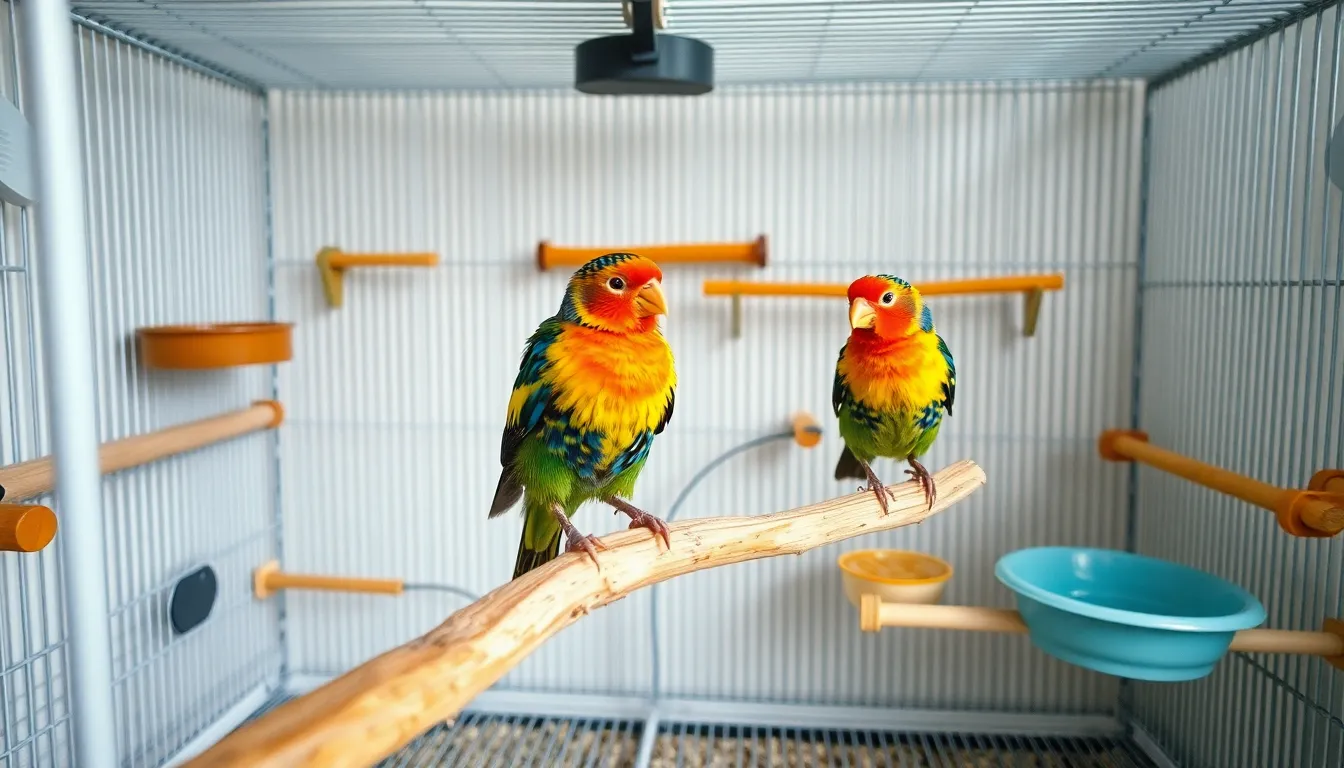
Pet finches bring the joy of songbirds into our homes with their melodic calls and active personalities. These small birds require exact care considerations to thrive in captivity while maintaining their natural behaviors.
Housing and Cage Setup
Housing pet finches requires spacious accommodations that accommodate their active flight patterns. We recommend horizontal cages measuring at least 30 inches wide by 18 inches deep by 18 inches tall for a pair of finches. Bar spacing between 1/4 to 1/2 inch prevents escapes while allowing proper ventilation.
Flight space takes priority over height since finches prefer horizontal movement. Multiple perches of varying diameters (1/4 to 1/2 inch) positioned at different levels encourage natural foot exercise. Natural wood branches like apple or willow provide texture variation and beak conditioning opportunities.
Cage placement affects finch wellbeing significantly. Position cages away from drafts, direct sunlight, and kitchen fumes at eye level or slightly above. Temperature ranges between 65-75°F maintain optimal comfort levels. Lighting cycles of 10-12 hours daily support natural circadian rhythms.
Essential accessories include shallow water dishes for bathing, seed guards to minimize mess, and cuttlebone for calcium supplementation. Nesting boxes during breeding season provide privacy and security. Clean newspapers or commercial cage liners simplify maintenance routines.
Diet and Nutrition
Finch nutrition centers on high-quality seed mixtures specifically formulated for small songbirds. Commercial finch blends containing millet, canary seed, and niger provide balanced nutrition for daily feeding requirements. Pelleted diets offer complete nutrition but require gradual introduction since finches naturally prefer seeds.
Fresh foods supplement basic seed diets with essential vitamins and minerals. Leafy greens like spinach, kale, and dandelion leaves provide vitamin A and calcium. Broccoli, carrots, and sweet potatoes add beta-carotene and fiber. Small amounts of apple, pear, and berries offer natural sugars and antioxidants.
Protein sources become crucial during molting and breeding periods. Egg food, sprouted seeds, and small insects like mealworms support feather development and reproductive health. Commercial egg food mixes provide convenient protein supplementation without preparation time.
Water quality impacts finch health directly. Fresh, filtered water changed daily prevents bacterial growth and contamination. Vitamin supplements added to water 2-3 times weekly support overall health, particularly during stress periods or illness recovery.
Feeding schedules maintain consistent nutrition throughout the day. Provide fresh seeds each morning and remove uneaten fresh foods after 4-6 hours to prevent spoilage. Monitor food consumption patterns as appetite changes often indicate health issues.
Health and Veterinary Care
Finch health monitoring requires daily observation of behavior, appetite, and physical appearance changes. Healthy finches display active movement, clear eyes, smooth feathers, and regular eating patterns. Lethargy, fluffed feathers, discharge from eyes or nostrils, or decreased appetite signal potential health concerns.
Preventive veterinary care includes annual wellness examinations with avian specialists. Initial health checks after acquisition establish baseline health parameters and identify existing conditions. Quarantine periods of 30 days for new birds prevent disease transmission to existing flocks.
Common health issues include mites, respiratory infections, and egg binding in breeding females. External parasites cause feather loss and excessive scratching behaviors. Respiratory symptoms include tail bobbing, open-mouth breathing, and nasal discharge. Egg-bound females display straining, lethargy, and abdominal swelling.
Environmental factors significantly impact finch health outcomes. Cage cleanliness, proper nutrition, and stress reduction prevent many common ailments. Weekly thorough cage cleaning with bird-safe disinfectants eliminates harmful bacteria and parasites. Quarantine sick birds immediately to prevent flock contamination.
Emergency situations require immediate veterinary attention. Signs include difficulty breathing, bleeding, paralysis, or unconsciousness. Locate avian veterinarians before emergencies occur since not all veterinarians treat birds. Keep emergency contact information readily accessible for urgent situations.
Finch Breeding and Reproduction

Finch breeding cycles begin with the arrival of spring when daylight hours increase and temperatures warm. Males establish territories through elaborate song displays and chase away competing males from preferred nesting sites. Territory size varies from 0.5 to 2 acres depending on species and habitat quality.
Courtship behaviors showcase the male’s fitness through complex rituals including song performances, food offerings, and colorful plumage displays. Males sing up to 200 times per hour during peak breeding season to attract females and defend their territory boundaries. Females evaluate potential mates based on song quality, territory resources, and male physical condition.
Nesting Habits and Construction
Nest construction typically occurs 7 to 14 days after pair formation with both partners participating in the building process. Finches construct cup-shaped nests using grass stems, twigs, moss, and soft materials like feathers or animal fur for lining. Common nesting locations include tree branches, shrub forks, building eaves, and dense vegetation between 3 to 20 feet above ground.
Female finches select the final nest site while males gather construction materials and defend the area from intruders. Construction time ranges from 3 to 6 days with work sessions lasting 2 to 4 hours during morning periods when temperatures remain cool.
Egg Laying and Incubation
Egg laying begins within 48 hours of nest completion with females producing one egg daily until the clutch reaches completion. Clutch sizes vary by species:
| Species | Average Clutch Size | Incubation Period | Annual Broods |
|---|---|---|---|
| American Goldfinch | 4-6 eggs | 12-14 days | 1-2 |
| House Finch | 2-6 eggs | 13-14 days | 2-3 |
| Purple Finch | 3-5 eggs | 13 days | 1-2 |
| Zebra Finch | 4-6 eggs | 12-16 days | 3-4 |
Female finches handle incubation duties exclusively while males provide food and territory defense. Incubation begins after the final egg arrives to ensure synchronized hatching across the entire clutch.
Hatching and Nestling Care
Hatching occurs over a 24 to 48 hour period with chicks emerging using specialized egg teeth that disappear within days. Newly hatched finches weigh approximately 1 to 2 grams and remain completely dependent on parental care for survival.
Both parents feed nestlings through regurgitation of partially digested seeds and small insects every 15 to 30 minutes during daylight hours. Protein requirements increase dramatically during the first 10 days when rapid growth and feather development occur.
Nestling development follows predictable stages with eyes opening between days 5 to 7 and pin feathers appearing around day 8. Fledgling departure happens 12 to 19 days after hatching depending on species and environmental conditions.
Fledgling Development and Independence
Fledglings remain dependent on parents for food and protection during the first 2 to 3 weeks after leaving the nest. Parents continue feeding responsibilities while teaching essential foraging skills through demonstration and encouragement techniques.
Young finches practice flight maneuvers and develop coordination through short flights between perches within the family territory. Independence typically occurs 4 to 6 weeks post-fledging when juveniles can locate food sources and avoid predators without parental assistance.
Juvenile finches reach sexual maturity between 6 months to 1 year depending on species with most individuals attempting their first breeding during the spring following their birth year.
Attracting Wild Finches to Your Yard

Creating an inviting environment for wild finches transforms any outdoor space into a vibrant hub of avian activity. Strategic placement of appropriate feeders and food sources encourages regular visits from these colorful songbirds.
Best Bird Feeders for Finches
Nyjer (thistle) feeders attract the highest number of finch species with their specialized mesh or tube design. These feeders feature small feeding ports measuring 3-4mm in diameter that accommodate finch beaks perfectly while preventing larger birds from monopolizing the food source.
Tube feeders with multiple perches provide ample feeding opportunities for finch flocks measuring 6-12 individuals. Metal construction resists squirrel damage better than plastic alternatives and maintains structural integrity during harsh weather conditions. Drainage holes in the feeder bottom prevent seed spoilage and mold growth.
Sock feeders offer an economical solution for beginners testing finch attraction methods. These mesh bags hold nyjer seeds effectively but require replacement every 2-3 months due to material degradation. Position sock feeders away from strong winds to prevent excessive swaying.
Platform feeders accommodate ground feeding finches like House Finches and Purple Finches during winter months. Covered platforms measuring 12×12 inches protect seeds from rain while allowing multiple birds to feed simultaneously. Screen bottoms promote proper drainage and air circulation.
| Feeder Type | Capacity | Species Attracted | Maintenance Frequency |
|---|---|---|---|
| Nyjer Tube | 1-2 lbs | Goldfinch, Siskin | Weekly |
| Platform | 3-4 lbs | House Finch, Purple Finch | Every 3 days |
| Sock Feeder | 8-12 oz | Goldfinch, Redpoll | Twice weekly |
Ideal Food Types
Nyjer seeds rank as the premier finch attractant with their high oil content providing essential energy reserves. Fresh nyjer maintains palatability for 2-3 months when stored properly in cool, dry conditions. Black oil sunflower seeds appeal to House Finches and Purple Finches with their easy crack shells and nutritious kernels.
Canary seed mixtures combine multiple small seeds including millet, canary grass, and hemp hearts. These blends satisfy diverse dietary preferences among finch species while reducing waste from selective feeding behaviors. Quality mixtures contain minimal filler ingredients like cracked corn or wheat.
Native plant seeds from coneflowers, black eyed Susans, and cosmos provide natural food sources throughout autumn and winter. Allow these plants to go to seed rather than deadheading to create sustainable feeding opportunities. Finches consume approximately 8-10 grams of seeds daily per individual.
Millet sprays offer entertainment value as finches extract seeds directly from the natural cluster formation. White proso millet contains 11% protein content supporting molting and breeding activities. Red millet provides variety but costs 15-20% more than white varieties.
Fresh water sources complement feeding stations with shallow dishes measuring 1-2 inches deep. Moving water from drippers or fountains creates audible attraction signals heard up to 100 feet away. Clean water containers every 2-3 days to prevent bacterial growth and disease transmission.
Conclusion
Finches represent one of nature’s most successful bird families combining beauty intelligence and adaptability in remarkable ways. We’ve explored how these small songbirds have captured hearts worldwide through their vibrant plumage melodic voices and fascinating behaviors.
Whether you’re observing wild finches at your backyard feeder caring for pet finches at home or simply appreciating their role in ecosystems these birds offer endless opportunities for discovery and connection with nature.
Their contributions to science culture and our daily lives remind us that even the smallest creatures can have profound impacts. We hope this comprehensive guide inspires you to look closer at these extraordinary birds and perhaps welcome them into your own outdoor spaces.
Frequently Asked Questions
What are finches and how many species exist?
Finches are small songbirds belonging to the Fringillidae family, with over 230 species worldwide. They’re divided into three subfamilies: true finches (Fringillinae), canaries and goldfinches (Carduelinae), and estrildid finches (Estrildinae). These adaptable birds are found on every continent except Antarctica and Australia, ranging from 3 to 10 inches in length.
What do finches eat and how are their beaks adapted for feeding?
Finches primarily eat seeds and have specialized cone-shaped beaks perfectly adapted for cracking open various seed types. Their beak size and curvature vary depending on their feeding specializations. During breeding seasons, they may also consume insects for additional protein. Their diet shifts seasonally, especially during migration and breeding periods.
Where do finches live and what habitats do they prefer?
Finches inhabit diverse ecosystems including forest edges, grasslands, urban areas, and suburban gardens. They’re highly adaptable, with some species thriving at sea level while others prefer mountainous regions. Different species have varying elevation preferences and climate tolerances, making them successful across multiple environments worldwide.
How do finches behave socially and during breeding season?
Finches are highly social birds that form flocks outside breeding seasons for safety and foraging advantages. During spring breeding season, males establish territories through elaborate song displays and courtship behaviors. They build cup-shaped nests and typically lay 2-6 eggs per clutch, with both parents sharing incubation and chick-rearing duties.
What makes finches popular as pet birds?
Finches are beloved pets due to their melodic songs, vibrant colors, and active personalities. They’re relatively easy to care for, requiring spacious horizontal cages, high-quality seed mixtures, and clean water. Their social nature means they thrive in pairs or small groups, making them entertaining and engaging companions for bird enthusiasts.
How can I attract wild finches to my backyard?
Attract finches using Nyjer tube feeders, sock feeders, and platform feeders filled with nyjer seeds, black oil sunflower seeds, and native plant seeds. Provide fresh water sources and plant native seed-producing plants. Maintain clean feeders and consistent food supplies, especially during winter months when natural food sources are scarce.
What are the most common finch species in North America?
Popular North American finch species include the American Goldfinch, known for seasonal color changes and cheerful calls, and the House Finch, recognized for urban adaptability. The Purple Finch, found in northern forests, displays distinctive raspberry-red male plumage. Each species has unique characteristics, behaviors, and habitat preferences.
How do male and female finches differ in appearance?
Male finches are typically more vibrantly colored than females, especially during breeding seasons. This sexual dimorphism helps with mate attraction and territory establishment. Males often display brighter reds, yellows, and other colors, while females tend to have more subdued, camouflaged plumage for protection during nesting and egg incubation.
What role did finches play in scientific discovery?
Darwin’s Galápagos finches were crucial in developing evolutionary theory, demonstrating adaptive radiation and natural selection. These finches showed how species adapt to different ecological niches through beak variations and feeding specializations. Their study continues to provide insights into evolution, speciation, and ecological adaptation in scientific research today.
How do I care for the health of pet finches?
Monitor finches daily for behavioral changes, appetite variations, and physical symptoms. Provide a clean environment, balanced nutrition with high-quality seeds and fresh foods, and maintain proper temperature and lighting cycles. Establish relationships with avian veterinarians for regular check-ups and emergency care, as finches can hide illness symptoms effectively.

